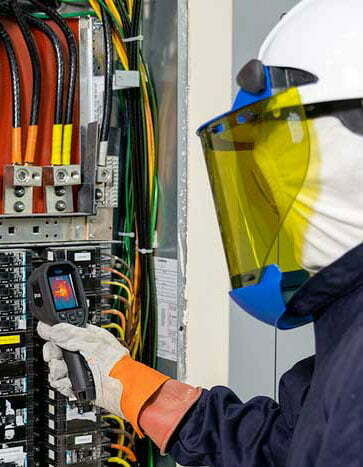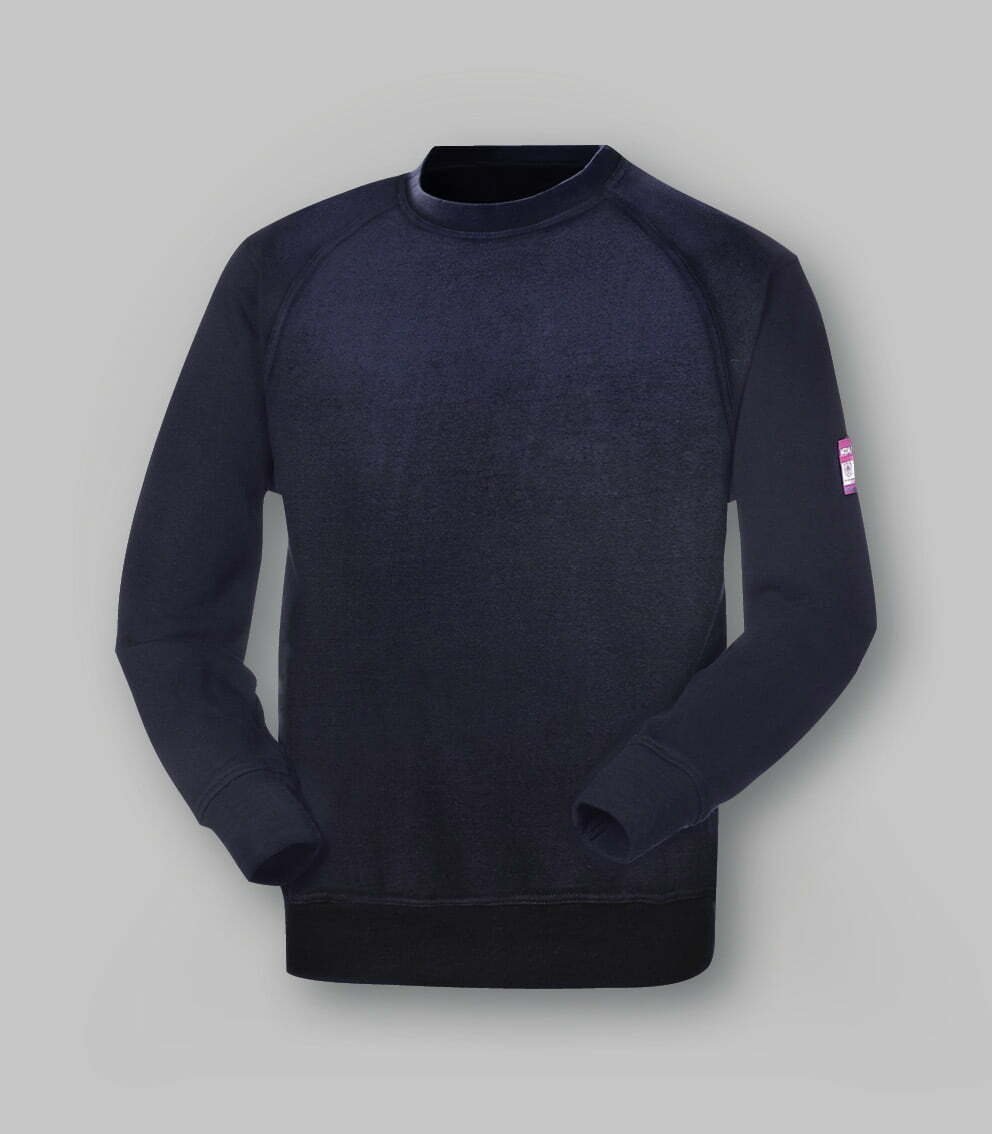IEC 61482
Protective Clothing for Electric Arc Protection
Standards IEC 61482-1-1:2019 and IEC 61482-1-2:2019 specify the requirements and test methods that protective clothing and materials related to heat and flame-resistant clothing for workers exposed to electric arcs must adhere to.
The garments undergo specific tests to determine:
- The ATPV (Arc Thermal Performance Value) and EBT (energy break-open threshold) value;
- The arc flash protection class.
What’s Electric Arc?

An electric arc is a continuous, high-voltage electric discharge that occurs accidentally and unexpectedly between two conductors. This electrical discharge is accompanied by a strong glow, intense heat, and often a wave of high pressure, noise, and toxic fumes.
An electric arc can occur due to:
- Systemovervoltages;
- Melting overloaded conductors;
- The presence of moisture or conductive dust that interferes with the surface insulation of an insulator.
The temperatures resulting from the electric arc can exceed 10,000°C and can lead to fires with explosions, metal vaporization, intense emission of ultraviolet rays the formation of toxic gases and excessive noise.
These factors can cause varying degrees of harm to the operator depending on their health and the duration and manner of exposure to the electric arc. This harm can include:
- Increased pressure;
- Toxic influences due to the melting of the casings;
- Cardiac arrest;
- Second or third-degree burns, which are the most common injuries
- Fractures or damage to internal organs;
- Involuntary muscle contraction, which can result in sudden and dangerous movements, falls, and other accidents.
The occurrence of an electric arc poses a severe, , potentially lethal risk.
Scope
The energy generated by an electric arc can ignite standard protective clothing. Therefore, workers exposed to this risk must be adequately protected.
These garments are primarily used by personnel who work with electrical cabinets or panels, electricians who frequently handle conductive materials or electrical systems, and other workers at risk in chemical plants and refineries.

General requirements
Protective workwear designed to ensure safety in environments with a potential electric arc presence must comply with the test methods outlined in the IEC EN 61482-1-1:2019 standard.
- The ATPV value (Arc Thermal Performance Value) signifies the maximum thermal energy a fabric can withstand before the worker suffers second-degree burns;
- The EBT (energy limit of breakage) value indicates the maximum exposure to energy that a garment can endure without breaking.
The arc resistance of a fabric is, therefore, determined by its ATPV or EBT.
The IEC EN 61482-1-2:2019 standard, the test is carried to the closed arc: an electric arc is recreated in a highly confined environment using special electrodes, with the fabric exposed.
This test classifies the fabrics into two classifications:
- Class 1, where the fabric must remain intact at 4 KA short circuit condition for a time of 0.5 seconds, protecting the operator from second-degree burns;
- Class 2, where the fabric must remain intact at 7 KA short circuit conditions for a time of 0.5 seconds, protecting the operator from second-degree burns.
The arc resistance of a garment corresponds to the fabric class it is made of.
More on the IEC 61482 standard
THE STOLL CURVE
The Stoll Curve is a mathematical model that allows us to quantify the response of human skin and tissues to heat energy sources.
When tissues transition from 36°C (body temperature) to 45°C, burns begin to occur. Beyond 50°C, skin damage occurs 100 times faster than at 45°C, while at 72°C, the skin undergoes instant and complete destruction.

As a result of these studies, special calorimetric sensors have been developed to replicate the skin’s reaction to exposure to flames. These sensors, when placed on fabrics or mannequins and subjected to the closed arc test, predict the onset of second or third-degree burns.
Discover the features of the other safety clothing
Visit our website and explore all the Arc Protection Garments






